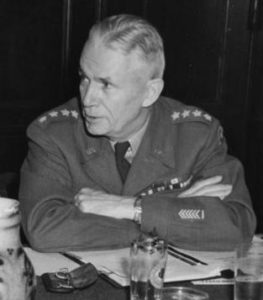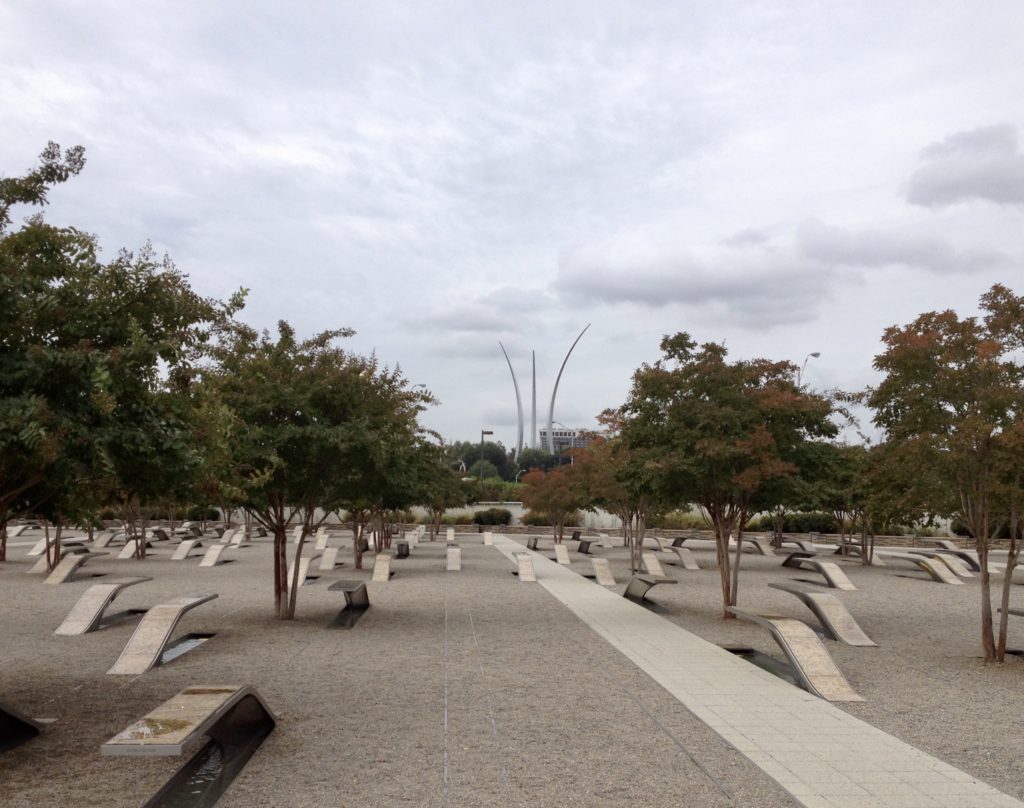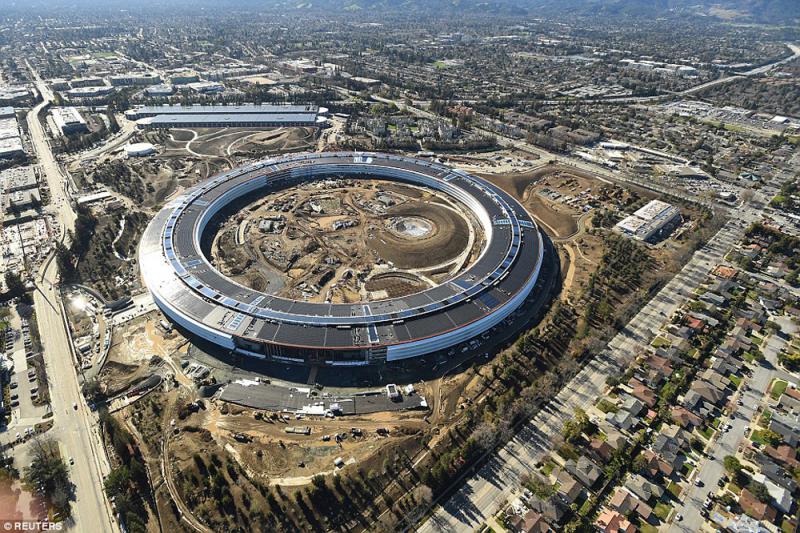The Pentagon
 The Pentagon, a History: the Untold Story of the Wartime Race to Build the Pentagon–and to Restore It Sixty Years Later, by Steve Vogel, came out in 2007, but somehow we had missed it. Then Henry Kerfoot brought us a copy with perfect timing; I finished it in three days. Vogel’s book conveys the urgency of centralizing many military commands as the US prepared for World War II. The Pentagon was conceived and approved in just one week in July 1941; ground was broken September 11, 1941; the first workers moved into the first completed wedge on April 29, 1942. Within 16 months of ground-breaking, it was fully operational. Built at a cost of $49.6 million, it has 3.7 million net square feet of office space and 17.5 miles of corridors, and currently holds 23,000 employees.
The Pentagon, a History: the Untold Story of the Wartime Race to Build the Pentagon–and to Restore It Sixty Years Later, by Steve Vogel, came out in 2007, but somehow we had missed it. Then Henry Kerfoot brought us a copy with perfect timing; I finished it in three days. Vogel’s book conveys the urgency of centralizing many military commands as the US prepared for World War II. The Pentagon was conceived and approved in just one week in July 1941; ground was broken September 11, 1941; the first workers moved into the first completed wedge on April 29, 1942. Within 16 months of ground-breaking, it was fully operational. Built at a cost of $49.6 million, it has 3.7 million net square feet of office space and 17.5 miles of corridors, and currently holds 23,000 employees.
The Pentagon is the world’s largest low-rise office building. It is twice the size of the Merchandise Mart in Chicago, has more than twice the floor space of the Empire State Building, and the U.S. Capitol could fit into any one of its five wedge-shaped sections.

It takes five pages for Vogel to list all the characters who played a role in his history of the Pentagon. There were Henry Bennett, Ruth Bush, Laurel Carson, and Jimmy Harold, who steadfastly and successfully resisted the cafeterias segregating Negro employees in 1942. I also enjoyed reading about extraordinary leaders like Lt. Col. Brehon Somervell, Leslie R. Groves, Clarence Renshaw, and Bob Furman, men I had never heard of, but who were heroes at getting jobs done fast. Groves went on to head the Manhattan Project that produced the atomic bomb, and took Furman with him. The Construction guru and genius was John McShain, who had already built the Jefferson Memorial and would go on to build Franklin Roosevelt’s Library in Hyde Park.
 The same degree of passion and efficiency was evident after an American Airlines jet piloted by terrorists plowed into the Pentagon on September 11, 2001, sixty years to the day after the original ground-breaking. Those strong concrete columns poured in 1941, and recently reinforced, held the plane’s destruction to the three outer rings of one wedge. Lee Evey, head of the Pentagon Renovation, then in progress, and Allyn Kilsheimer, a structural engineer, became new Pentagon heroes. Dubbing it the Phoenix Project, they set an audacious goal of re-building and re-opening the damaged part by September 11, 2002. With thousands working day and night, they succeeded.
The same degree of passion and efficiency was evident after an American Airlines jet piloted by terrorists plowed into the Pentagon on September 11, 2001, sixty years to the day after the original ground-breaking. Those strong concrete columns poured in 1941, and recently reinforced, held the plane’s destruction to the three outer rings of one wedge. Lee Evey, head of the Pentagon Renovation, then in progress, and Allyn Kilsheimer, a structural engineer, became new Pentagon heroes. Dubbing it the Phoenix Project, they set an audacious goal of re-building and re-opening the damaged part by September 11, 2002. With thousands working day and night, they succeeded.
Our friend Roger Pitkin worked in the Pentagon for twenty-five years, first with the Navy Judge Advocate General’s office and then in the Office of the General Counsel for the Department of Defense. On 9/11 he was in his office on the River side of the Pentagon, watching television coverage of the World Trade Center in flames, when he and his office mates heard and felt what they thought was a large bomb explode. Even though they had just watched videos of planes flying into buildings, it wasn’t until they went outside and saw the roiling smoke, that they realized a plane had crashed into their building, too. He remembers a huge traffic jam on I-395 with workers from the District and the Pentagon all trying to get home. There was a cell-phone jam, too. Finally, after two hours, his son got through and was able to relay the good news of his survival to the rest of the family.
Steve was in Richmond that day at a board meeting of the Virginia State Golf Association Foundation. On a walk with Katalina Stein on a particularly beautiful morning, I heard a woman in her yard exclaiming that a plane had just hit the World Trade Center. When I got home, I received a call from Pastor Robert Moore in Houston, with whom Joel and I had traveled earlier that year in Germany, and with whom we were collaborating on a reciprocal tour by the Dresden Bach Choir. The choir members were to arrive that afternoon and I had found housing for them in our neighborhood. I was shocked when Pastor Moore told me that the Pentagon had been hit. The Dresden flight was turned back over the Atlantic Ocean, their tour postponed. Soon I heard from Lilli, David and Shelby, who knew that their father often had business on Wall Street. Then Amy Haberman (now Mahoney) called and said she needed a family. She and I drove to Arlington Hospital to give blood, but were told they needed no more. All of my Tuesday students came for lessons that afternoon, preserving what normalcy we could. Reading Vogel’s book brings back vivid memories.
Seventy-five years later, Apple Inc. in Cupertino CA opened a new headquarters last month for 12,000 employees. It’s officially “Apple Park,” but most people call it the Spaceship. “One Ring to Bind Them All,” proclaimed the Wall Street Journal headline. Again, a simple shape for a similar purpose, to bring together disparate staff and foster collaboration. But at a cost of $5 billion, it’s a lot glitzier. Designed by Steve Jobs and Norman Foster, it features a seamless, curved-glass exterior outfitted with solar panels around the top and a theater designed to look like a MacBook Air. Like the Pentagon, it offers jogging trails, a large fitness center, and a café in the central courtyard. The Spaceship is more than a mile around and includes a visitor centre and an Apple Store, of course. For more details click here.
Family history: Steve’s job at the Pentagon was what brought us to Washington in June 1968. He worked in the Office of Robert Anthony, the Comptroller of the Department of Defense, for about a year. Oddly, I never visited his office, nor did I get a photo of him at work there. He says I was too busy marching in Vietnam War protests. For 47 years, we passed by the Pentagon often. Its shape was a convenient reference when I taught Pentatonic scales to my piano students; even the youngest kids in Northern Virginia knew that the Pentagon has five sides, just as that scale has five notes. In 1989, I toured the building with Francine LePechon, our exchange student. In 1995 our friend, the Honorable Jan Lodal, hosted us in his office when he was Principal Deputy Under-Secretary of Defense for Policy.
Among the last places Steve and I visited before we moved to Florida in the fall of 2015 was the Pentagon Memorial to 9/11 Victims, a place to remember 184 lives lost, to reflect on what the Pentagon has meant to us, and to give thanks for our country.

Leave a Reply